Reference: https://www.cnblogs.com/lingzeng86/p/6595951.html
Nothing else to do, sum up the common commands under linux, but also useless to a long, later to be used when reviewing records
ls和ll
Both are real documents, but not to show hidden files, hidden files if you want to display, then you need to use ls -a command

cd
cd ~: enter the user's home directory
cd -: Back to Contents before entering this directory
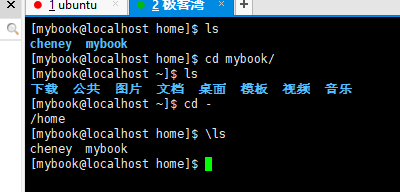
pwd
To display the current directory

whoami
Displays the current user name
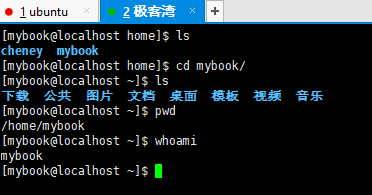
mkdir
Create a directory mkdir a tree a, that is a file
mkdir bc create two trees, a file b, c a file
mkdir -p file1 / file2 / file3 :-p representatives loop to create, if not create this directory is the directory

Tab
Automatically append shortcuts, if you have a book file in the current directory, when you type b press the tab key, it will automatically help you filled the file name, it is easy to use
clear
Are some of the conventional command, mainly on the interface empty, of course, not really emptied, just write your command all moved to the top, the new open-top line, like emptying effect
touch
This is the mkdir and attached together using, mkdir is to create a folder, touch a file is created, but can also create multiple file names at the same time with a touch

rmdir
rmdir a delete a file a
rm -rf a cycle directory and delete all files in a directory (with caution)
rm -rf bc circulation delete the two files
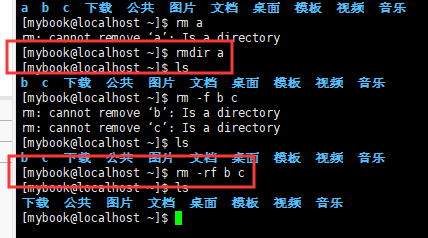
rm
To delete a file or directory
rm file1 delete a file
rm -f file1 not prompted to delete a file
rm -rf file circulation to remove all the contents of the entire file, be sure pwd own position, caution
cp
cp file / *:. Copy all the files under the file directory to the current directory
cp -a dir1 / dir2 /:. dir2 direct copy this folder to the working directory
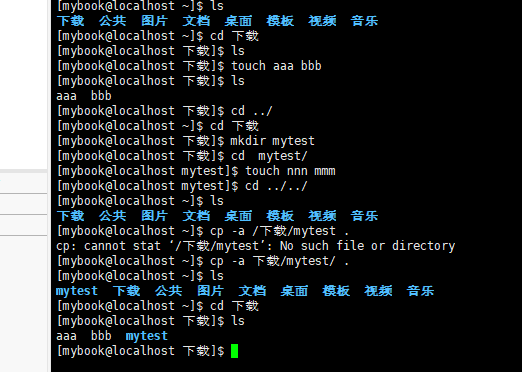
its
Switching superuser command, you can avoid a lot of authority, of course, this is more than a command, you can refer to the following summary before I do
Grandpa, inside please , when you finish entering need to enter their orders, usually root

chmod
For command authority, you can modify the settings authority, the same reference notes before me
Grandpa, please inside , with ll see that the permissions of each file
chmod +777 file1: file1 change the permissions of the file that the user has read, write, and execute permissions, the same group and others have execute permissions to read, no write permissions to other users of the same rights and privileges for group same
chmod a + r file1: Anyone can file file1 to read
chmod a + x file1: Anyone can file file1 to perform
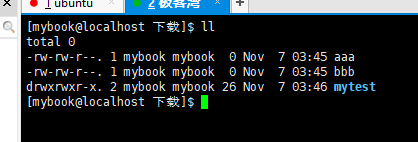
vi or vim
Are editing commands, first edit the file with a file vi file, and then enter the edit page, do as i pay under normal display before writing to insert
Exit vi editing mode: Grandpa, come in please


cat
Command to display file contents, we often use cat to see the contents of the file
cat file to view the contents of the file file
cat -n file line number


tac
Flashbacks show file, in turn, is equivalent to cat
With a relatively small file, typically used to check the log

more
Recommended file viewer, so that the screen paused while showing full page, the page can be switched by keyboard shortcuts
General command more aaa
Next space representation
Enter represents the next line
b represents the previous page
/ Patten patten this element represents find
q for quit
less
Easy File Viewer
less commands usage and more command similar, it can also be used to view more than one file, except that in addition to the less command press the spacebar down display the documents, you can also use the arrow keys to scroll through the file, when to end while browsing, as long as the command prompt in less ":" the next press Q to
head
Show header
head file default display the last 10 lines
head -5 file 5 displays the first line

tail
Display end of the file
tail file default display the last 10 lines
tail -5 file shows the last five lines
tail -f file displayed in real time at the end of the file, it is important to check the log command
echo
echo 123 is directly input to the terminal
echo aaa>>a.txt 追加
echo aaa> a.txt cover
echo -n ""> a.txt the file emptied here to add -n, otherwise the character will be saved in the home inside
sort
Sort Text command
sort -n file sorting digitally
sort -r file in reverse
sort -u file deduplication
sort -rm file ascii sort of way
and piping in conjunction with the sort command
Such as: du -k * | sort -rn # file size descending row (very important) to see which account for more documents
grep
Printing the matched lines, grep often used in conjunction with conduit
grep "regular expression" file. With a good premise is familiar with regular grep under linux
grep 3 a.txt # a.txt file contains three rows printed out
grep 3 a.txt | wc -l # a.txt how many rows are contained in the file 3
grep -n 3 a.txt # 3 contains the line number and the line gave break out
grep -v 3 a.txt # 3 does not contain are displayed
Beginning grep 89 $ a.txt # 89 rows displayed
grep -n aa * # current directory contains all lines of aa displayed, print out the line number

kill
kill 10140 # child process itself and kill all
kill -9 10140 # only kill the child process
top
Check the health system commands, there are also notes, a bit more, I'll just send the link to it is I wrote before
Compression and unpacking
Do not make much introduction, see notes uncle, come in please
ps
Command displays the current process, using regular ps -ef
netstat
View network information
netstat -lnp listening port case
netstat -anp all the ports case